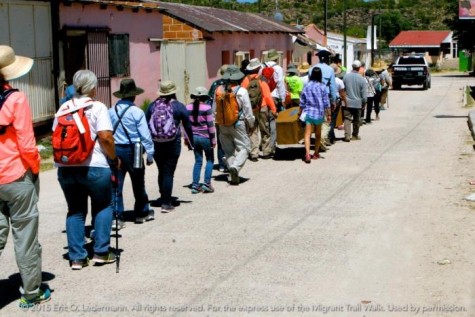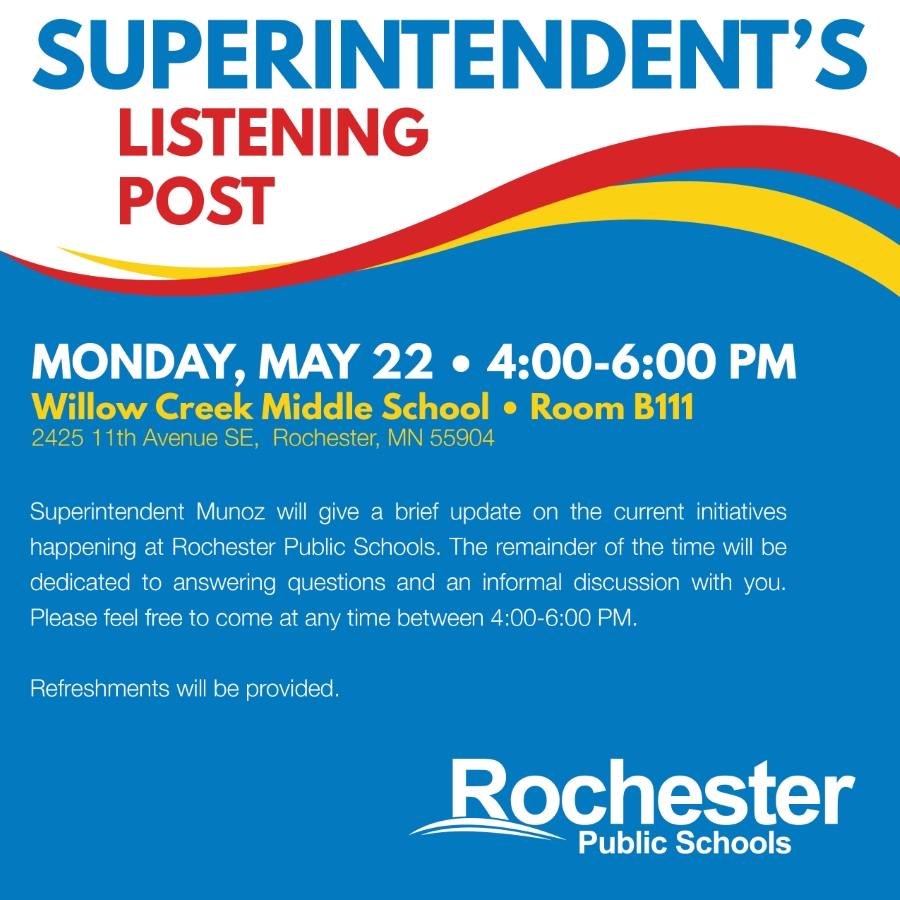Walking the Migrant Trail
February 12, 2016
Mesquite tree – prosopis glandulosa. A barren tree in a seemingly barren wasteland. The red earth is brittle and callus as it crunches softly underfoot. A young man stumbles forward. His water jug has long since been depleted and the only shade is under the papery leaves of the mesquite. Just five minutes, the young man thinks as he lays down beneath the tree’s delicate sanctuary. Just five minutes and then he will continue on to “tierra prometido”- Promised Land – America. We will never know the young man’s name. Forgotten, he will join the many buried in the desert sands. Despite our society’s attempts to ignore the situation along the Mexican American border, I chose to listen to the voices and bodies buried in the sand. Last May I walked 75 miles from El Sasabe Mexico to Tucson Arizona in commemoration of the migrants who have died crossing the desert. Through this Migrant Walk I proactively sought to understand the issue and possibly work toward a solution surrounding our border crisis.
I can’t precisely describe what it was that inspired me. Why, out of all the numerous opportunities I have been given to create an impact, did this small act of walking motivate me so? I can only say that I saw it as a chance to generate substantial change. Rather than simply volunteering to tutor some recent immigrants over the summer or helping an El Salvadoran Relations Committee, some of the numerous volunteer activities deemed appropriate for a 17 year old, my experience allowed me to gain a deeper understanding of the daily struggle that exists around the border. Although I highly respe ct those who volunteer weekly at a soup kitchen, the purpose of my walk was to search for a concrete solution to the border crisis. Few opportunities are given to change the stories of human mistreatment that permeate throughout our media. Instead, although I may feel disturbed or even distraught by the images broadcasted by the media of the Syrian refugee crisis or sweatshop conditions in Bali, because these crises happen so far away I soon dismiss them as yet another problem I can’t solve. The Migrant Walk directly addresses an issue that occurs within America. By traveling to Mexico I was able to gain a first hand look at the border which was very important to me. To have no bias filter, or prejudice based on someone else’s views. After all, in order to fix a problem you have to have experienced it as well.
ct those who volunteer weekly at a soup kitchen, the purpose of my walk was to search for a concrete solution to the border crisis. Few opportunities are given to change the stories of human mistreatment that permeate throughout our media. Instead, although I may feel disturbed or even distraught by the images broadcasted by the media of the Syrian refugee crisis or sweatshop conditions in Bali, because these crises happen so far away I soon dismiss them as yet another problem I can’t solve. The Migrant Walk directly addresses an issue that occurs within America. By traveling to Mexico I was able to gain a first hand look at the border which was very important to me. To have no bias filter, or prejudice based on someone else’s views. After all, in order to fix a problem you have to have experienced it as well.
Despite taking months to prepare for this walk, the reality of my journey didn’t truly hit me until I was flying over the desert I was about to walk across. Never had I seen such an alien environment so starkly different from my own. The desert was brittle and so devoid of all comforts that even the plants kept knives buried deep within themselves. The illegal migrants who walk these sands must be truly resourceful and inconspicuous in order to survive. I never directly saw a migrant because much of their movement is now controlled by cartels and human trafficking, but it was hard not to notice the remnants of backpacks, toothbrushes, carpet shoes (literally just shoes sewn together with carpet to cover migrants’ tracks), and even bullet shell casings. These articles of human life served as stark reminder of why I was here.
Although much of the walk took place on a nature refuge, the border patrol made themselves known by constantly patrolling nearby roads and skies. The juxtaposition of both sides, border patrol versus Migrant Walkers, began to blur, as time went on. By meeting different people and viewpoints along the way I began to gain a more holistic view of border conflict. First there was Jerry, a patrol officer I met while crossing over the legal border. He saw his job as stopping the movement of narcotics across the border while also providing for his family in one of the highest paying jobs in the area. He was not someone who took pleasure in deporting migrants, as it’s so easy to imagine, but rather he was just another human intertwined in the conflict. And then there was Maria, an ER nurse in Tucson who comforts migrants chained to their beds after they’ve broken both their legs trying to jump over the fence. She has seen the ugly side of what this border produces and works every day to diminish its effect by even the smallest acts of kindness such as comforting gesture or prayer as these migrants waited in suspense for deportation back to a land that held little promise. Although many believe the problems surrounding the border exist just along the wall, in reality it is the personal impact on individuals that truly resonate with me.
In the end, if I took anything away from the walk it is this: there is no clean and simple legislation that could ever completely fix the border for everyone. The border is so rooted in the area’s socioeconomic issues, disentangling border communities from the social perceptions of migrants prevents any positive resolution to arise. So no, I didn’t leave Arizona enlightened with a panacea ready to take on the world. If anything, I left with even more questions than I arrived with. But I see my purpose now is to raise awareness about border issues. I have already spoken to numerous community groups and churches about the border. By speaking out about migrants’ plight I can only hope that the issue will gain momentum in public discussion until our government addresses current border situations. The greatest injustice I could ever commit against the migrants would be in my silence. Through silence we forget and pass life without effecting significant change. For now I will continue on through my high school life, relishing the comfort of my privilege. However, my experience in the desert has inspired me to learn more about the problem and potential solutions, and in the future, I hope to return to the border and work for substantial change.




